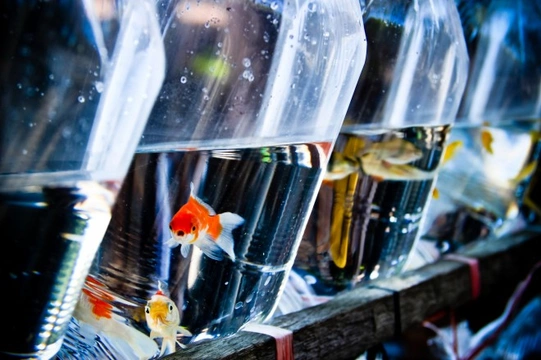
Transporting new fish safely and comfortably
If you keep a fish tank of any kind, part of the pleasure of ownership is getting new fish to introduce into your tank. However, fish are not the easiest of animals to move around, for obvious reasons, and a significant number of fish that were healthy when purchased will fail to thrive after purchase, and may potentially die within a few days, which can often be attributed to the moving process itself.
Buying a new fish and getting them home can be rather stressful, both for the fish and the people involved, but there are some steps that you can take to make the transition as easy as possible, and to ensure that your new fish stays healthy.
Read on for some advice on how to transport new fish home safely and comfortably.
Packing fish for transport
When you buy a fish from a pet store or a breeder, they will usually provide you with the basic housing within which to transport the fish, which usually amounts to a thick, watertight bag. However, you should prepare for the journey yourself by bringing along some equipment that can help to keep your fish stable and comfortable on the way home.
The fish that you buy should be bagged up in a tall bag that contains roughly equal amounts of water and air, which is then securely sealed to prevent leaks and spills. It is a good idea to take a small cardboard box with you that is filled with packaging materials, such as bubble wrap or air pockets, which you can place the bagged fish into to keep the bag stable, and to retain some of the temperature of the water.
Once you get back to your car, safely secure the box in the vehicle and cover it over with a towel or something similar, as darkness will help to lower the fish’s stress levels.
When driving
Obviously when you have an animal of any type in the car, you will need to drive safely and carefully! Avoid swerving, making sharp turns and braking hard, and try to avoid moving or disturbing the fish on the way.
If your journey will be longer than 90 minutes or so, you should schedule in a stop to check on your fish, open the bag and allow oxygen in, before sealing it up again and re-packaging it for your ongoing journey.
When you get home
When you get back home with your fish, you should already have everything set up ready to take your fish, and it is a terrible idea to buy a fish on a whim and then have to run around when you get home sorting things out!
Unless this is the first fish to enter your main tank, you should have a quarantine tank set up ready for the new fish, which should be their new home for the first two weeks so that you can observe them for signs of ill health or parasites, before they join your main tank.
Begin by floating the closed bag containing the fish in the water of the tank, allowing at least half an hour for the temperature between the tank and the bagged fish to stabilise. Then, open the top of the bag to allow some oxygen in, and start introducing water from the tank into the bag gradually, over a period of a couple of hours to allow your new fish to get used to the change.
The lights of the tank should be left off for at least the first 24 hours, to reduce your new fish’s stress levels and keep them calm.
Once the water temperature in both the bag and the tank are the same, and the contents of the bag is mainly comprised of tank water, it is time to release your new fish into the tank. In order to do this, you should encourage your fish to swim out of the bag, rather than tipping the fish and all of the water in the bag into the tank. This is because you cannot be sure what is contained within the bag water, such as parasites, previously used medications or some forms of disease, and so minimising the amount of bag water that gets into the main tank is important.
Your new fish should remain within the quarantine tank for at least two weeks so that you can be sure that they are healthy, or for your first fish that goes directly into your main tank, you should wait at least two weeks after introducing them before you shop for a friend for them!
Try to ensure that your fish is not disturbed any more than they need to be during their first two weeks, to minimise stress and try to ensure that the new fish stays healthy.



